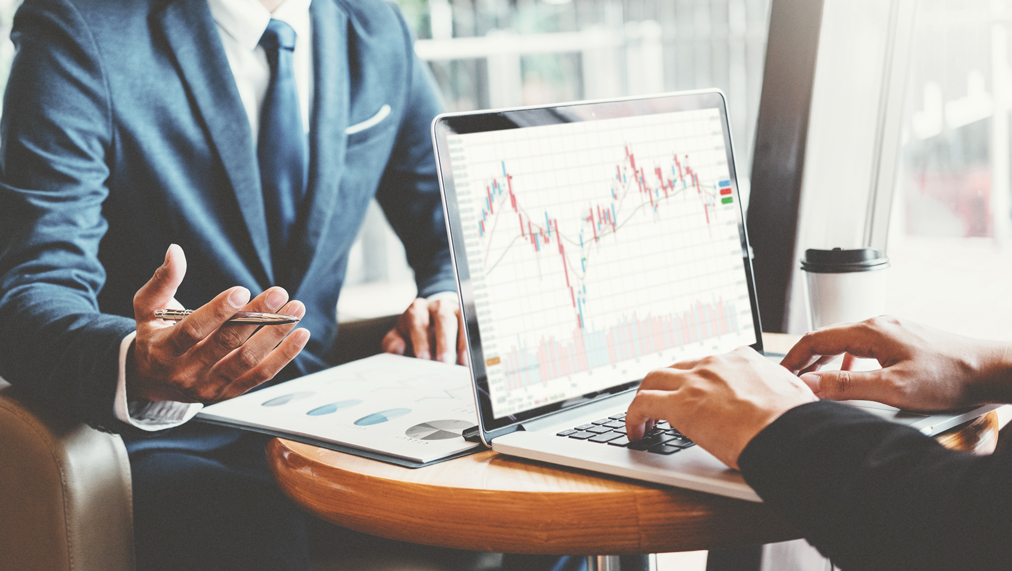Actually, things were looking rather rosy for the financial markets in early 2022. On January 3, the S&P 500 Index was up by 5.69% compared to just one month earlier. But barely one month later, it had plummeted by more than 9%. Then, after a few brief rallies, it fell below the -20% mark in September… before rallying again, then dropping again... In Canada, the S&P/TSX Index was going through similar contortions, although the troughs were less pronounced.
During this rollercoaster ride, many people watched the value of their investments fluctuate wildly – along with their confidence. If you are one of them, you might appreciate the perspective offered by the discoveries of behavioural finance and some historical data.
A world of perceptions
Behavioural finance, a field that developed largely under the influence of the Nobel laureate in economics Richard Thaler, has demonstrated that neither investors nor markets behave rationally. On the contrary, many cognitive and psychological biases often lead people to make decisions that are against their own best interests.
One of these biases is loss aversion, where a person feels the pain of losses more powerfully than the joy of similar gains, and may tend to over-react to them and behave irrationally. Another is extrapolation bias, the tendency to project recent trends forward in a straight line, which leads people to be overly optimistic during bull markets and overly pessimistic during bear markets.
This world of perceptions is reflected in what professionals refer to as the “cycle of investor emotions,” as illustrated here.
So it might be reassuring to know that this cycle is normal and that both the markets and the people who invest in them will always end up at some point in the cycle. Better yet: it’s usually when the general feeling is upbeat – like in 2021 – that risk is peaking, and it’s when people are feeling the most negative that there is the highest potential for gain.
Review your risk profile
In the same vein, after living through this very trying year, many people might be wondering if their risk tolerance is quite as high as they had thought. The best way to answer that question is to reassess your risk profile, with the help of your advisor. Knowing your risk profile can help you decide what type of portfolio would suit you best. This profile incorporates three concepts:
-
risk tolerance, which is the level of volatility you are psychologically able to handle;
-
risk required, which is the level of volatility you would need to accept in order to achieve your goals;
-
and risk capacity, which is the level of volatility you could normally afford to accept, based on your situation and your investment horizon.
Your risk profile is the result of finding a balance among these three elements. While your risk tolerance is certainly very important, your advisor could help you reassess it within the broader perspective of your complete profile.
Okay, but if the old formulas aren’t working any more…?
One of the destabilizing elements of the past year has been that the good old balanced portfolio, typically containing 60% equities and 40% fixed income securities, hasn’t lived up to its promises. While each of its components is supposed to offset the other, both of them posted negative returns.
Here, too, historical data could help to put things in perspective. According to a study by J.P. Morgan, since 1980 we have seen no fewer than nine instances where a 60/40 portfolio dipped into negative territory within a given year. In eight cases, returns for the following year were positive, with an average annual return of over 17%. The analysts’ conclusion: it might be more important to focus on what a balanced portfolio could offer in the future than on how it did in the past year.
Timing the markets?
Here is one last thing to think about for investors who are considering getting out of the stock market and buying back in when it’s on its way up again. The problem is that, for the behavioural reasons discussed above, the markets usually recover in a very unpredictable way.
For example, from 1995 to 2022, the average annual compound return on the S&P 500 Index was close to 7.7%. However, during this period of almost 7,000 days, if an investor was out of the market for just the best 20 days, that investor’s return would have been 2.7%. To time the markets, you would need an extraordinary gift: who could have predicted that in 2008, one of the worst years ever for the markets, the S&P 500 would climb by 11.6% on October 13, by 10.8% on October 28, by 6.9% on November 13, by 6.3% on November 21 and by 6.5% on November 24? In this case, the real risk would have been not being in the market when it was making these gains.
As we can see, investment risk is a complex concept that involves a number of elements, including psychological and behavioural factors. As we move into 2023, if you have any questions or concerns about this, don’t hesitate to talk things over with your advisor, sooner rather than later.
The following sources were used to prepare this article:
Barchart, “Stock Market & Sector Performance.”
CNBC, “Why you may miss the market’s best days if you sell amid high volatility.”
Finametrica, “Risk Tolerance and Risk Profiling.”
Forbes, “The Cycle Of Market Emotions: Where Are We Now?”
Investopedia, “An Introduction to Behavioral Finance.”
J.P. Morgan Asset Management, “Is the 60/40 dead?”
MarketWatch, “S&P 500 Index.”
MoneyController.fr, “Ne surestimez pas les récents gains boursiers.”
The Nobel Prize, « Richard Thaler ».
Wes Moss, “The Perils Of Market Timing: Missing The Best Days In The Market.”
